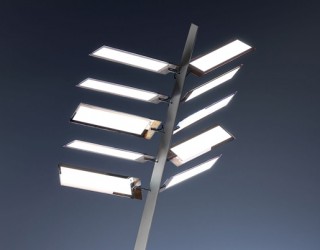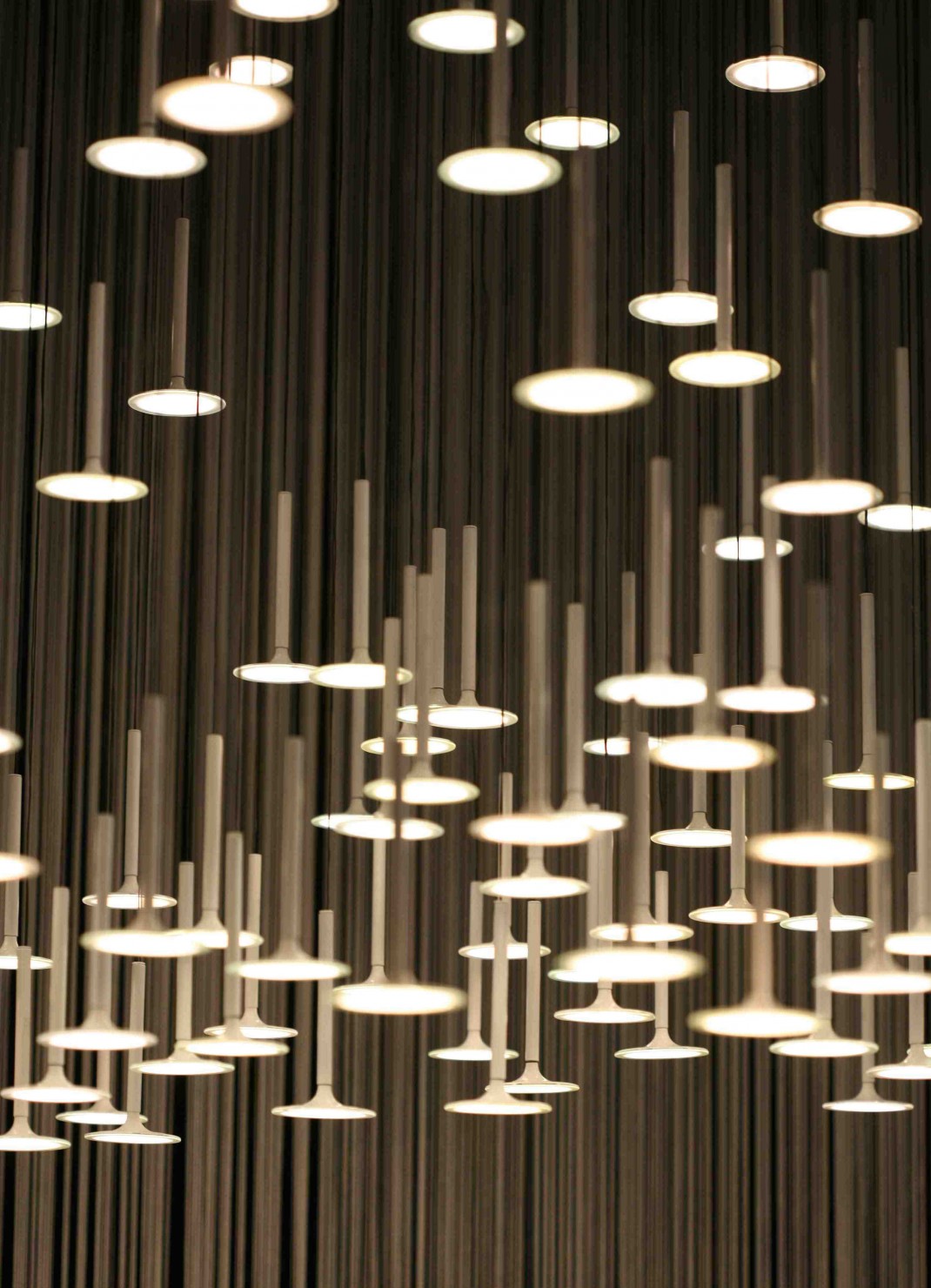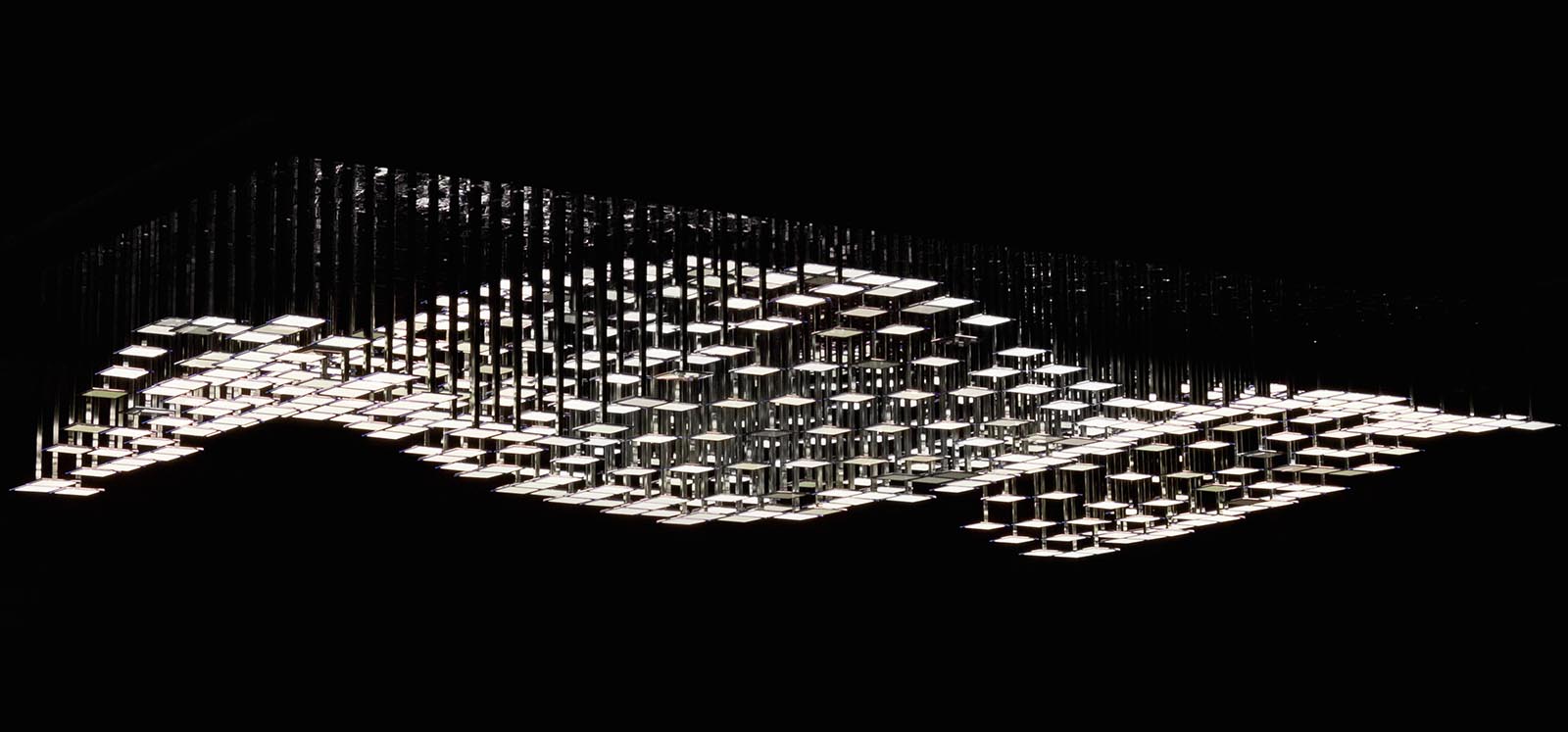Fuss-free diamonds of the lighting industry
OLEDs (Organic Light-Emitting Diodes) have always been seen as much more than light sources – that is, as elegant design elements.
The flat light-emitting technology is produced by placing a combination of organic films between two conductors. As a product an extremely thin, transparent, lightweight, flexible, attractive exterior and, not to forget, a fantastic quality of luminance is delivered. Its dynamic yet minimalistic exterior means there are endless prospects to seamlessly integrate light across many lighting schemes; almost as if light has been sculpted from thin air. This little beauty of the lighting world has allowed for a glamorous and exciting revolution within lighting design.
As a lighting solution, OLEDs have already been used across premium design sectors from high quality TV enhancement to both interior and exterior fixtures on Lexus and Audi’s new designs. Within architectural lighting design, OLEDs have been widely experimented with to create artistic sculptures, light tile mosaics and interactive walls.
But, the question is often asked…are they affordable enough for other applications of more commercial design? Parallel to the growing sustainable technologies chasing up the LED, here at Nulty we are excited about embracing OLEDs’ endless opportunities within a slightly more affordable price range.
Providing CRI of 80 or more, OLEDs can also be easily dimmed to any desired level and unlike tubular and compact fluorescent lamps they emit their full output as soon as they are switched on, promising fantastic colour consistency. They can also be transparent, diffused, or, most impressively, mirrored to create their signature dynamic aesthetic – beautiful even when the lights are turned off!
 OSRAM collaborated with renowned artist Ingo Maurer in footsteps towards creating art with light, with the Early Future tabletop lamp (left).
OSRAM collaborated with renowned artist Ingo Maurer in footsteps towards creating art with light, with the Early Future tabletop lamp (left).
Driven by finding a whole new set of functional purposes for the OLED, Phillips introduced the Brite FL300. It has impressive performance specifications, providing 300 lumens over a good 12 cm sq at an efficiency of over 50 lumens per watt, finally making it much more than a one-trick pony decorative feature. Italian furniture manufacturer Riva1920 is using the Brite FL300 in its first light, the K Blade, whilst Philips themselves are making a modern day spin on the once upon a time luxury chandelier, using four of the OLEDs in  their frst OLED luminaire (due to launch in Spring 2015).
their frst OLED luminaire (due to launch in Spring 2015).
Lastly, let’s not forget the breathtaking work of Blackbody who has impressively managed to reduce costings – now between £70-90 per module. This means their striking artwork can continue to be integrated into a much smaller-scale design. So, even though Nulty still sets this apart as a beautiful high-class feature, we think more and more people will be enjoying a bit of OLED luxury in their own homes some time very soon!


